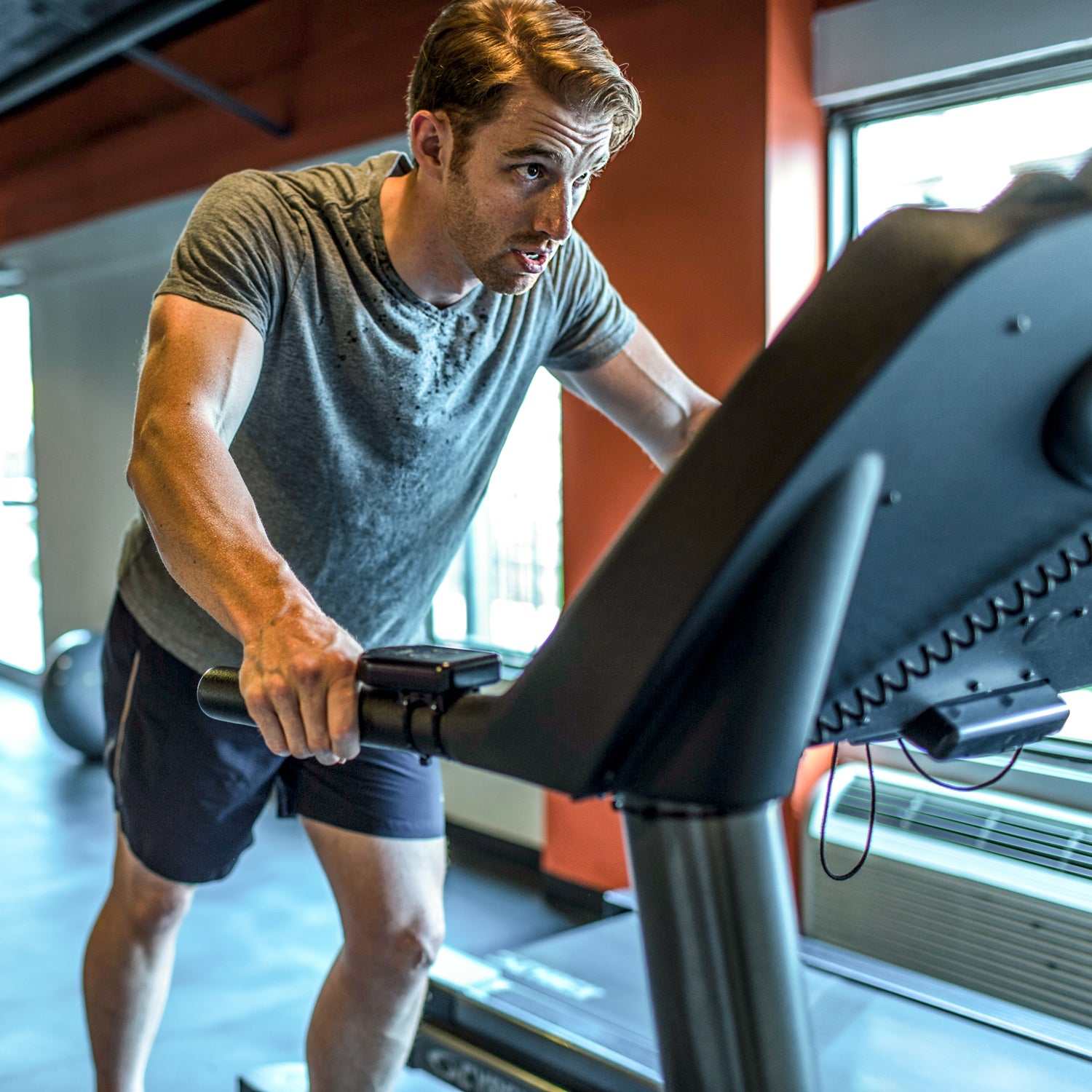Is winter the worst time of year to be a runner? That depends on whom you ask. While Floridians may cherish the blissful interlude between December and March as the only time they don’t have to get up at 5:30 a.m. to beat the heat, many runners in colder climates resent encasing themselves in layers of constrictive spandex. Of course, there’s another way to avoid extreme weather: the mighty treadmill.
According to a Sports and Fitness Industry Association survey recently cited in the Washington Post, more than 50 million Americans used a treadmill at least once in 2016. What was once a device used for punitive purposes, the Post article points out, is now part of a billion-dollar recreation industry. People actually pay for the privilege of using the human hamster wheel.
To be fair, the treadmill offers several appealing advantages in our convenience-obsessed age. It provides a hypercontrolled running environment that’s available 24/7. Pace and incline can be preprogrammed. Treadmill users are unencumbered by darkness, rain, or the absence of favorable running terrain. (When I use treadmills, it’s usually because the only other option would be to run along a strip mall–lined roadway with the attendant threat of being annihilated by a rogue SUV.) Following the spinning craze and rise of stationary bike studios like SoulCycle is a recent wave of treadmill running classes. In 2014, New York City’s first treadmill running studio, the Mile High Run Club, opened its doors.
But let’s not kid ourselves. Treadmills are still awful.
I should mention that I’ve never been a gym person. There’s something about the constant wiping down of machines, the fevered enlargement of select body parts, and the soundtrack of grunting and clinking metal that have always made me feel like I’m in a dystopian porno.
Unlike most other gym-goers, treadmill users typically won’t be groaning or contorting their faces in throes of agony and ecstasy. Such is the relative comfort of treadmill running that it even allows for multitasking; you can read a book or watch cable news on a built-in monitor while a motor keeps the conveyor belt whirring beneath your feet. But that’s precisely what I’ve always found so perverse about these machines for running—the simple fact that they are machines…for running.
The worst part about treadmill running is how it subtly rejects the value of running for running’s sake.
The prospective cost of gym membership or treadmill classes aside, the worst part about treadmill running is how it subtly rejects the value of running for running’s sake. In a gym context, every activity is a means to an end: motivated by health, vanity, or a combination of the two. (Do arm curls for bigger biceps; lat pull-downs to strengthen your back; that rope-shaking thing for—god knows what.) While a vigorous gym workout can undoubtedly provide some version of that elusive “natural high,” nobody would do this stuff if they weren’t chasing the end goal of self-improvement. In this environment, running isn’t even running anymore. It’s “cardio.”
The modern treadmill is also an affront to technological progress.
“In the past, treadmills were engines. They did important, dramatic tasks for people,” said Ivo Gormley, the founder and director of GoodGym, in a 2012 TED Talk about his company, which seeks to fuse exercise and community service. For centuries, Gormley explained, treadmills empowered humans to lift enormous loads of building material that helped create architectural wonders like Florence’s Duomo, built in the early 15th century. These days, however, treadmills consume rather than provide energy. (An average model requires about three horsepower, or roughly 2,200 watts, to operate, depending on the speed of the user. Faster runners require the machine to use more energy.)
For Gormley, the treadmill is a symbol for the way affluent societies have effectively designed exercise out of day-to-day life. As people have become more sedentary, we’ve moved into this bizarre situation where, as Gormley puts it in his presentation, “exercise is something you have to buy.” As someone who has always cherished both the simplicity and accessibility of running, the idea of it being packaged as a commodity is profoundly depressing.
Aside from whatever fitness benefits running outside may provide, the most restorative aspect of the experience for me is the psychological reprieve that comes from setting out on foot and unplugging for an hour or two. I don’t think it’s possible to get the same sense of distance when your horizon is limited to the treadmill interface. We already spend too much time looking at screens.


